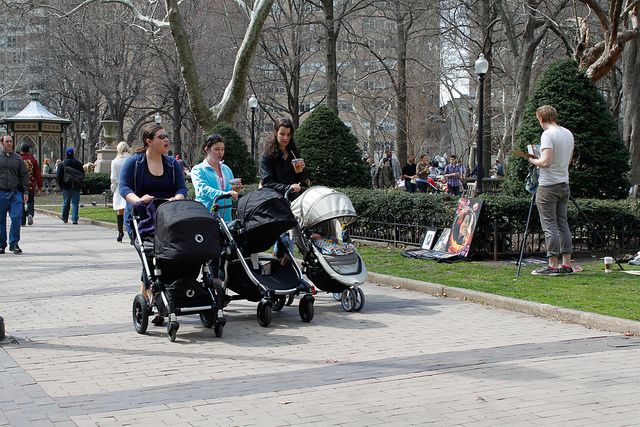Last week, the Philadelphia business improvement district Center City District issued a report showing a increase in downtown construction starts for the second straight year since the real estate market collapsed in 2008.
Six out of the eight ZIP codes that the CCD defines as the “Greater Center City” area saw increases in total unit sales, while all areas saw increases in home values. Six out of eight areas also saw decreases in the average amount of time properties spent on the market.
The CCD credited the continued appeal of “a dense cluster of high-rise office jobs and an intimately-scaled, walkable downtown, rich with more than 300 years of architecture and history.”
Although starts are still well below even year 2000 levels, continued improvement of the downtown real estate market meshes with a long-documented trend of population growth in Philly’s Center City neighborhood. Already ranked as the third most densely populated downtown in the U.S., Center City grew by 10.2 percent from 2000 to 2010.
While urban revitalization is often stereotyped as dominated by young professionals and retirees, Census data found that the Greater Center City area had an even balance of all age groups. Data from the year 2000 indicated an average household size of 1.7 people in the eight ZIP codes. That figure had ticked up to 1.75 by 2010 — a trend CCD attributed to couples opting to raise children in the city.
Center City District was created to provide supplemental services to the downtown core to make it more attractive, installing pedestrian-friendly streetlights, improving parks and providing enhanced street-cleaning and security services. Now, its focus is shifting to dealing with a miniature baby boom, as 22,000 children born to Center City parents in last 11 years reach elementary school and beyond. The District recently launched a website that promotes family-friendly events and educational choices for parents in the city’s core, while its latest park renovation project had a major focus on play areas for children.
Philadelphia’s downtown growth has bucked the city’s longstanding reputation as an urban center chained to a dying industrial culture. In decades past, residents and policymakers agonized over whether the city was heading toward Detroit-level abandonment. But in more recent years, the dialogue has shifted to a debate over how effective downtown growth will be at balancing a still-declining working class population and concerns about job creation.
Cities with even greater levels of previous abandonment are tracking similar gains around their downtown areas.
The Downtown Partnership of Baltimore, a Center City District analogue for Philly’s southern cousin, recorded a 16 percent growth in population within a one-mile radius of City Hall, counting 42,011 residents in 2011. Michael Evitts, vice president of communications and research at the Partnership, says the growth is all the more impressive as Baltimore’s downtown “wasn’t historically a residential center.”
While the city as a whole lost population in the 2010 Census, residents still flocked to the ornate towers and tight downtown streets. “If you look at a quarter-mile radius around City Hall, in the heart of what used to just be a business district, there was 395 percent increase in residents,” said Evitts, who added that in-house analysis indicated the core could support nearly 5,000 additional apartment units. He noted that unlike Philadelphia, which has struggled to attract commensurate business growth along with its residential gains, he characterized Baltimore’s job market as “solid”.
“We saw a lot of projects stall during the recession, but we’re starting to see that demand pick up again,” said Evitts. “The trends show that for both office and residential, people want to be downtown, particularly for Generation Y. Gen Y is going to be driving our downtown growth for the next 10 years.”
_200_200_80_c1.jpg)
Ryan Briggs is an investigative reporter based in Philadelphia. He has contributed to the Philadelphia Inquirer, WHYY, the Philadelphia City Paper, Philadelphia Magazine and Hidden City.
















